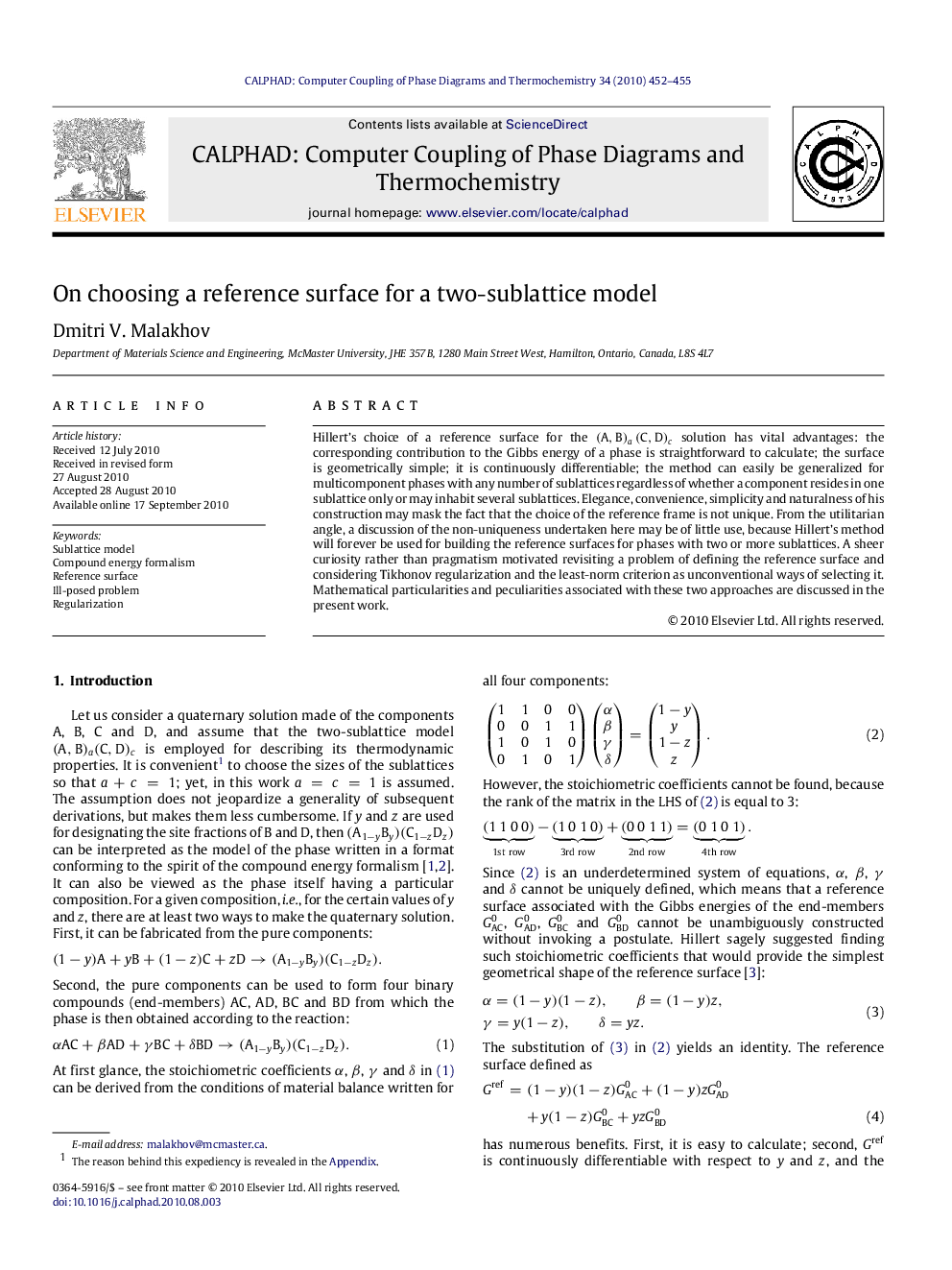| Article ID | Journal | Published Year | Pages | File Type |
|---|---|---|---|---|
| 1559225 | Calphad | 2010 | 4 Pages |
Hillert’s choice of a reference surface for the (A,B)a(C,D)c solution has vital advantages: the corresponding contribution to the Gibbs energy of a phase is straightforward to calculate; the surface is geometrically simple; it is continuously differentiable; the method can easily be generalized for multicomponent phases with any number of sublattices regardless of whether a component resides in one sublattice only or may inhabit several sublattices. Elegance, convenience, simplicity and naturalness of his construction may mask the fact that the choice of the reference frame is not unique. From the utilitarian angle, a discussion of the non-uniqueness undertaken here may be of little use, because Hillert’s method will forever be used for building the reference surfaces for phases with two or more sublattices. A sheer curiosity rather than pragmatism motivated revisiting a problem of defining the reference surface and considering Tikhonov regularization and the least-norm criterion as unconventional ways of selecting it. Mathematical particularities and peculiarities associated with these two approaches are discussed in the present work.
